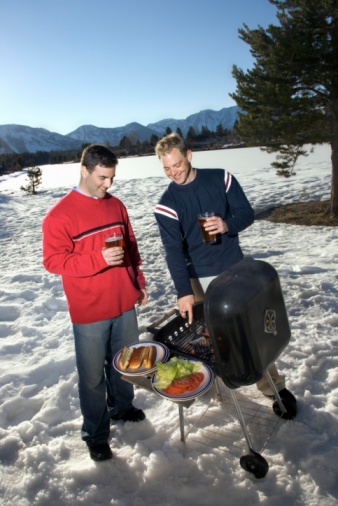
For millions of people, sunscreen doesn’t even come into play with skin care, but it should. Studies show that we need to be protecting our skin in the winter months just the way we do during the hot, humid days of summer.
Snow can reflect up to 80 per-cent of ultraviolet rays so those who ski, snowboard and hike need to be cautious. Altitude can also increase UV strength by as much as 10 to 12 per-cent. Even on cloudy and overcast days those rays can reach earth and cause health damage.
Skin damage does not take place overnight. It builds over time from the onset of our introduction to the world. At an early age we are exposed to the outdoors and sun damage starts to develop. Some of the resulting sun damage over the years is merely cosmetic; however, other side effects can be serious and even life threatening. Below is a list of some damaging effects of exposure to ultraviolet rays, and how skin care can help.
- Dry skin
- Sun spots
- Fine lines
- Wrinkles
- Burns
- Cancer
- Eye damage
- Immune system suppression
- Tough skin
UVA and UVB rays are two kinds of ultraviolet rays that hit the earth’s surface. Both can cause skin damage. UVA rays are long rays that penetrate deep into the skin. Most research indicates UVA can even penetrate clothing. UVB are shorter and impact the outer layer of the skin. This type of radiation is responsible for sunburns. Both UVA and UVB have been linked to cancer. According to the Canadian Cancer Society, the number of skin cancer cases has increased by two-thirds over the last 20 years. Sun damage is clearly a big problem.
While the best protection is to avoid any contact with UVA or UVB rays, for most of the population that is impossible. Wintertime skin care simply has to become part of the daily routine. Studies suggest those who are involved in outdoor sports should use at least SPF 30. People who spend the majority of the daytime outside during the winter months will want to consider an even higher SPF factor. The sunscreen should be applied 30 minutes before heading outdoors and reapplied every 2 hours. If the activity you are involved in causes sweating then you should be applying it more often.
Dermatologists have suggested that skin in the winter months needs extra hydration and often suggest a sunscreen that has an oil-base or a sunscreen with moisturizer built into it. Some experts will also recommend products that are noncomedogenic. These sunscreens should be part of your skin care routine as they don’t clog pores.
Like most consumer products, sunscreens can have an expiration date so don’t forget to check it. Most sunscreen products can last up to three years before losing their protection value. If there are any visible changes to the color or consistency of the lotion, discard it immediately.
The Canadian Pediatric Society doesn’t recommend putting sunscreen on babies under 6 months old simply because it hasn’t been tested on infants that young. Using a canopy over a stroller or a sun umbrella is suggested instead. When avoiding the sun is difficult at this age, SPF 30 labeled UVA/UVB or broad spectrum is best. Make sure the label also says “chemical free”. Parents may also want to do a test patch for allergic reaction in a small area on the baby’s arm or back first. SPF 15 is recommended for lip balm, but dermatologist say it should be used sparingly at part of your skin care routine.
Some researchers argue that most of the sun damage we receive takes place before the age of 18, but the impact of this sun damage is felt years later. They advocate education; teaching people about skin care from an early age to prevent sun damage totally. Most dermatologists agree that applying ample sunscreen to prevent sun damage before you head outside each winter is a wise. This can help prevent serious skin care issues later in life.
